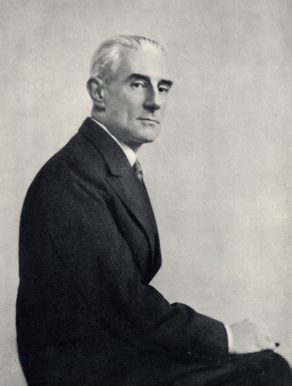[ad_1]
Sometimes an urgent deadline is needed to get the creative juices flowing. In the year Ravel worked on the piano trio for four months in August 1914, and recently took several weeks off for rest and relaxation. Nothing seemed different to bring the new episode to completion.
and then First World War It happened. France immediately announced the general mobilization of her forces, and Ravel was eager to serve his country. But first, he thought that the piano trio should be finished, because it was six years before the idea of writing began. He once told a friend, ‘I’ve written my trilogy, now I just need the themes. Suddenly the French and German armies are locked in war and the race to bag the piano trio begins.
A fever of activity ensued. ‘I work on the trio with the certainty and clarity of a madman,’ Ravel He wrote on August 3, days after France entered the war. Partly because he had the basic form of the trio in his head, the work proceeded quickly. By August 29, the piece was finished and ready for the printer. ‘The thought of having to leave at once makes me do five months’ work in five weeks!’ he told his friend Stravinsky. “I have never worked with more madness, more heroic strength,” he explained in another letter.
Only one obstacle remained – to join the French army and join the war. This was not as easy as Ravel expected. Earlier, at the age of 20, he was exempted from regular military service due to health reasons. Now, nearing 40, heart disease and short stature were issues. His first application to join the Air Force was rejected. But Ravel persevered and after six months was finally accepted as a lorry driver.
Though sometimes prosaic—he even served military vehicles in Paris for a time—Ravel’s war career was not consistently free of danger. In March 1916, it was posted to the Verdun front, transporting gasoline and other ammunition. ‘On a road with double the load my car is supposed to carry,’ he wrote. “And even so, I had to hurry, because all this was within the limits of what was allowed
The guns.’
An already respected composer could easily have missed wartime service when hostilities broke out. Stravinsky commented that he ‘could have had an easy place with his age and name or he would have done nothing at all’. Ravel, however, was, as one observer put it, ‘a little iron’ and proudly patriotic. And when he considered joining the army in early August 1914, he had a vision of what could happen, once referring to his new piano trio as a ‘posthumous work’ – meaning it could easily be buried dead. During the first performance.
Fortunately, that did not happen. The new trio It had its public premiere at the Salle Gavotte in Paris on 28 January 1915, attracting limited attention during the war. Ravel himself did not emerge from the conflict completely unscathed – various ailments led to his premature discharge from the army in 1917, during which he suffered from ‘depression, emaciation and neurasthenia’.
He recovered enough to complete the piano set Tomb of Cuperius In the same year. Although six of the movements are dedicated to friends lost in the war, the overall tone of the work is surprisingly positive and optimistic. Ravel’s explanation is that ‘the dead are very sad, in their eternal silence’.
We named Ravel one of them The best French composers and one of the top 10 best composers
[ad_2]



Comments are closed.